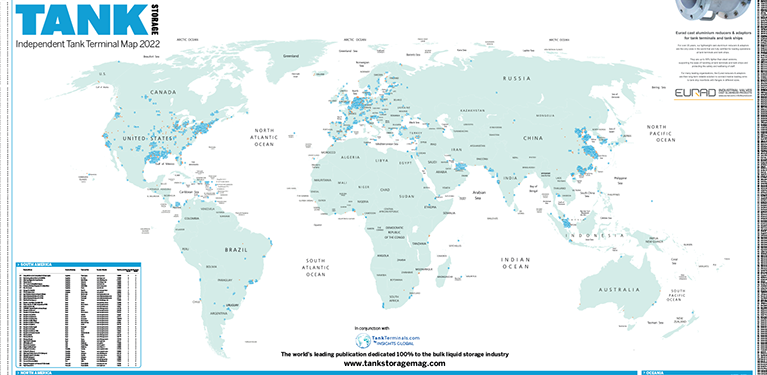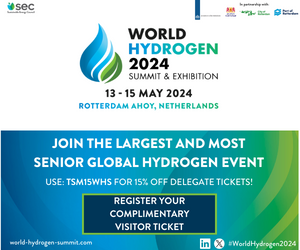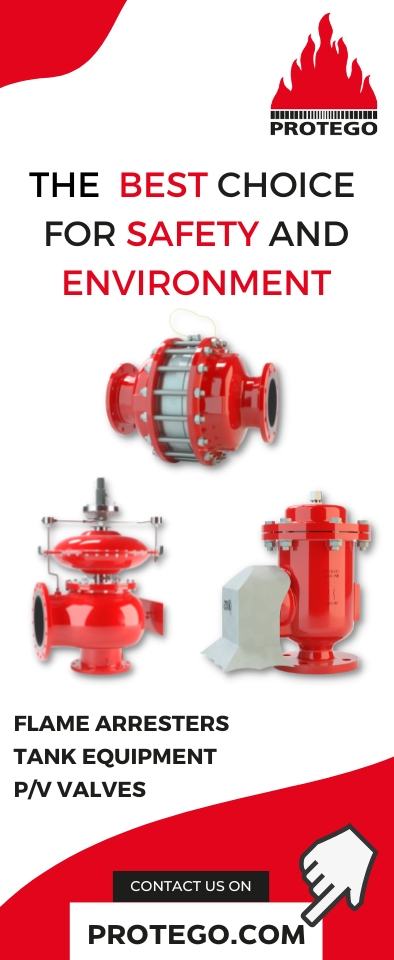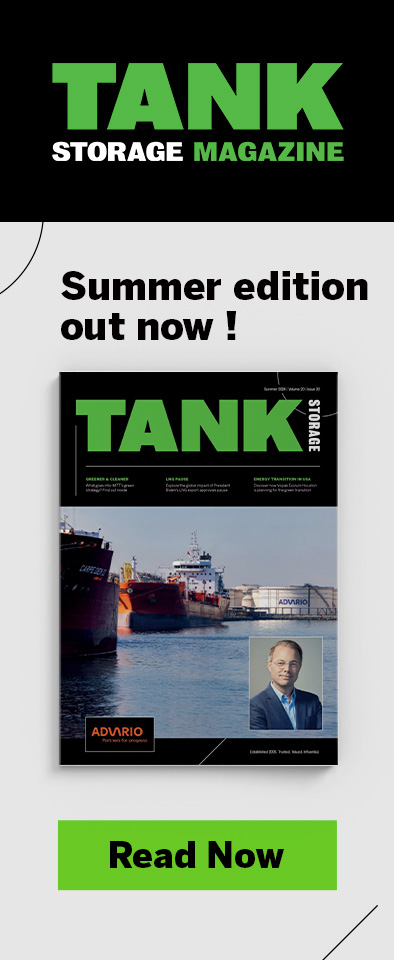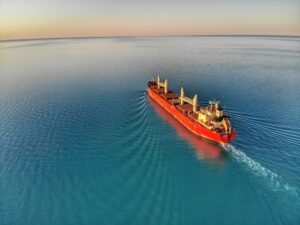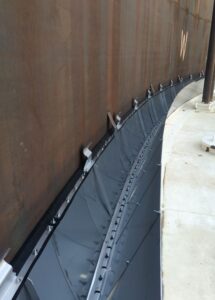The global energy landscape is changing. The push for alternative energy sources is in full swing: green electricity, green hydrogen and sustainable fuels will replace fossil fuels in the combat of CO2 emissions globally. This influences the tank storage industry in particular: a move away from petroleum products and towards the storage of chemicals, biofuels, and other energy carriers such as LNG, ammonia, and hydrogen. The proportion of petroleum- based storage and shipping remains however very significant and will likely remain significant for the next decades.
During the storage and shipment of liquid bulk products such as petroleum products, chemicals and biofuels, vapour emissions occur. Generally, the emission of these vapours is limited by the implementation of measures such as internal floating roofs, breather valves and vapour balancing systems. The remaining vapour is treated in an emission control system, such as a vapour recovery unit, activated carbon filters, a gas scrubber, or an oxidizer. But ever-stricter regulations impose new challenges on the tank storage industry, making existing systems inadequate. The world needs to reduce emissions to face the global warming effects. VOCs such as methane have a far greater global warming potential than CO2 for example. It is an important task to design high- efficiency emission control systems that do not produce additional emissions.
The reduction of VOCs through thermal oxidation is still the most efficient method to combat the adverse effects of these emissions. But until now, thermal oxidizers have needed fossil fuels and released additional CO2 and NOx. How can terminals combine these factors in an emission reduction with optimised technology? Can thermal oxidation systems contribute to a reduction in carbon footprint? How can operators choose and invest wisely and be ready for the future?
Regulations & Requirements: Innovative Solutions Needed
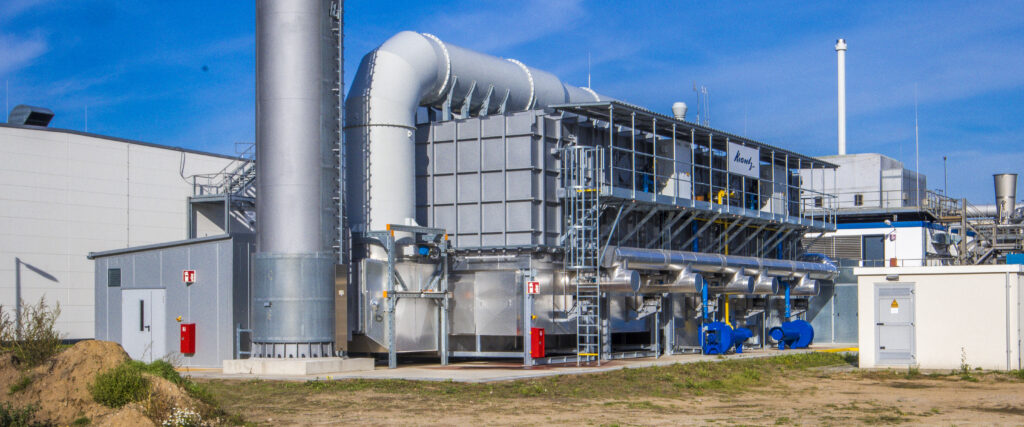
VOCs are the third largest group of air pollutants after CO2 and nitrogen oxides. They are generally hazardous to humans and the environment and are precursor substances for ground-level ozone. This results in VOC emission limits that are set at values as low as 50 milligrams per m3. For harmful substances such as benzene, isoprene, these values are set at 1 mg or lower.
Approved in 2020, the European Commission set goals to become climate neutral by 2050. This ambitious goal known as the EU Green Deal is combined with the goal to reduce greenhouse gas emissions in the EU by 50 % in 2030 when compared to 1990. CO2 emissions are taxed and regulated under the EU-ETS program, forcing asset owners to carefully select the type of process used and minimise the emission of CO2, on top of the already stringent requirements on VOC and harmful substance emissions.
Nitrogen oxides have long been subject to strict emission regulations. Recently, however, this has received renewed attention due to the ecological impact of nitrogen deposition, which affects soil quality and has a direct impact on biodiversity.
This has led to a renewed focus on reactive nitrogen-containing substances such as ammonia (NH3) and nitrogen oxides (NOx). When fuels are oxidized in a burner, nitrogen oxides are produced when the nitrogen in the air is combined with oxygen. In this process, the mode of operation and the performance of the burner are decisive for the level of NOx emissions. If the burner in thermal post-combustion plants is operated with fossil fuels to ensure the necessary oxidation temperature,CO2 and NOx are produced.
Tank Storage Vapour Treatment
At present, common solutions for emission control in the tank storage are vapour recovery, activated carbon filters or thermal oxidizers. Vapour recovery is a very efficient way of reducing emissions and recovering useful product. However, it requires a significant volume of absorbent liquid to be available, which is not always possible or desirable. Also, VRUs often struggle to meet the latest emission limits in a cost-effective and reliable way, needing continuous attention from maintenance personnel, with the risk of limiting the primary process of the terminal. Activated carbon is often used for low- concentration vapour streams. The risk is however that the solution is chosen based on its low investment figure but turns out to be very expensive to operate due to frequent replacements being needed. Solutions such as wet gas scrubbers can work very well on specific off gas streams, but the handling of liquid waste streams needs to be considered.
Emission Control: The Holistic Way
The design of an efficient emission control system can only take place with an in- depth understanding of the production process. Be it coating, printing, surface treatment, chemical production, tank storage: only by looking deep into the process and by understanding it completely can an effective emission treatment system be designed. The first step is always to see if an actual reduction at the source can be achieved. Being able to look at issues in context with each other, rather than as separate entities, has always been a challenge. If one has these skills, it is possible to design a complex system in such a way that it works well together.
A real challenge for engineers is when the task and requirements are highly complex – like cleaning VOC emissions sustainably and as CO2 and NOx neutral as possible. In the tank storage industry, for example, it is of great importance to take note of items such as possible preloads in ships, blanketing gases and mixture of chemicals in the gas phase. It requires the attention of skilled engineers to develop emission control master plans for a terminal, ensuring a long-term strategy is in place.
Efficient Thermal Oxidation Systems: The Future?
There are many technologies available for emission treatment. The use of thermal systems, despite the CO2 emissions generated, remains one of the most versatile and energy-efficient methods of treating exhaust air and off gas streams. The process is simple, but effective. Classic thermal oxidizers are extremely effective but consume significant energy in the form of support fuel, causing a high energy cost, combined with additional CO2 emissions, leading to even more additional cost.
Still, there is more to thermal oxidation than meets the eye. Making thermal oxidation highly energy efficient is mainly due to the two most important factors today: reducing the use of fossil energy and CO2 emissions, while maintaining the advantages of the high conversion rate of thermal oxidation. Using internal and external heat exchangers can drastically reduce the burner’s energy consumption. Every modern thermal system contains at least one internal heat exchanger, which can be combined with an additional external heat exchanger to make further use of the generated heat. The type of internal heat exchanger used determines the type of system. Thermal oxidation without an energy recovery system is no longer practical or permissible at many sites due to emission regulations and the high cost of CO2 emission allowances under the EU-ETS. Processes with optimised internal efficiency are for example a regenerative thermal oxidizer (RTO), a recuperative thermal oxidizer or the catalytic oxidizer.
In tank storage, the RTO is of particular interest. The internal regenerative heat recovery is extremely efficient at up to 96%. The energy required to ensure the necessary oxidation temperature is therefore comparatively low. It can be used downstream an existing VRU to reduce the overall emissions to well below the strictest limits, while reducing the strain on the VRU by allowing higher emissions that fall right into the optimal range for the RTO. In this operating case, the energy required to ensure the necessary oxidation temperature is generated by the combustion of the VOCs. No fuel is required. The RTO runs autothermally, generating no emissions through fossil fuels or the burner. This is referred to as CO2-neutral operation. This combination is marked as ‘Best Available Technology’ in the EU regulations. Also the RTO starts to become a real alternative for classic direct oxidizers due to these advantages for example in chemical storage terminals.
Decarbonisation Of Emission Treatment
What needs to be done if a thermal oxidation system is to be introduced? What should be done with existing plants? Should they be converted to new fuels, or should an electric, flameless technology be chosen? Using green hydrogen instead of natural gas is a reliable way to move away from using fossil fuels for thermal equipment altogether. Hydrogen burners are currently being developed for RTO systems. The addition of hydrogen to the exhaust air has already been successfully tested. As soon as green hydrogen is available, hydrogen can be utilised.
If the chosen system is intelligently implemented based on a deep understanding of the process, this goes even further: the effect can even be reversed. Not only is continuous fossil fuel not required, the energy contained in the VOCs is made available as heat and can reduce or replace conventional process heat generation fired by fossil energy. Thus, reducing the overall carbon footprint of the terminal for example while also meeting stricter emission limits.
Many thermal systems have the option of remaining in hot standby in the event of a low load without any energy being supplied and immediately going back into operation for an extended period, making them ideally suited for use in the tank storage industry. In other words, with optimal process design and intelligent control, the energy source for initial heating is no longer important, as the use of fossil energy is reduced to an absolute minimum.
Conclusions
Stricter emission regulations push the choice for vapour treatment towards thermal oxidation, as a primary process or as a polishing system. Greatly varying and partially unknown inlet conditions make holistic design and selection important to achieve success. The choice of energy source is less important than a good design, as this can result in a negative energy balance and thus contribute to a reduction of the total carbon footprint of the operation of a terminal. With good design, thermal systems such as an RTO can be very well used as a polishing step for a VRU system.
In the chemical storage the use of RTOs is becoming a very interesting energy- efficient alternative for standard oxidizers. The requirements for degassing of barges provide additional challenges but also opportunities for new and existing vapour treatment systems. They can become a source of revenue if designed to handle the conditions at hand. In the end, the additional step in emission control is almost always worthwhile: the holistic approach will pay off in the end for the operator, who does not have to pay for additional fuel, and for the environment, which does not have to deal with additional CO2 and NOx.
For more information:


